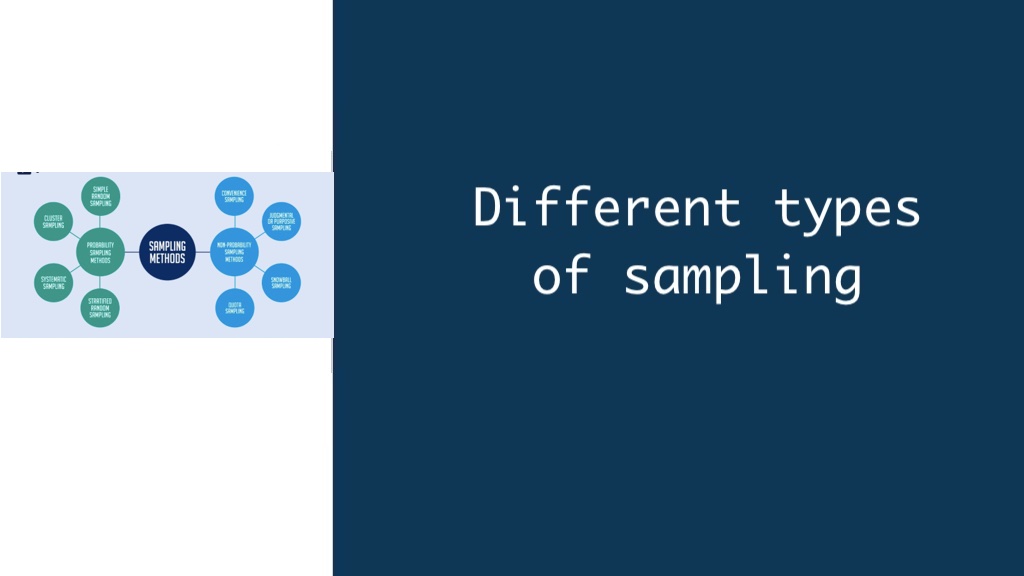In data science, drawing conclusions from a vast ocean of data often hinges on a manageable subset – the sample. But how do we ensure this sample accurately represents the entire population? Here’s where sampling techniques come into play. These techniques serve as the foundation for selecting a representative group of data points that reflects the broader population, allowing us to make statistically sound inferences.
The Two Main Branches: Probability vs. Non-Probability Sampling
Broadly, sampling techniques can be categorized into two main branches: probability sampling and non-probability sampling.
1. Probability Sampling:
This approach prioritizes randomization, ensuring every member of the population has a known and non-zero chance of being selected. This allows us to calculate statistical measures like confidence intervals and margin of error, making the results more generalizable to the population.
- Simple Random Sampling: The most basic form of probability sampling, it involves randomly selecting individuals from the population, often using techniques like random number generation.
- Stratified Sampling: This method divides the population into subgroups (strata) based on pre-defined characteristics. Then, a random sample is drawn from each subgroup proportionally to its representation in the population.
- Systematic Sampling: Here, we select a random starting point within the population and then choose elements at a fixed interval throughout the data set.
- Cluster Sampling: The population is divided into groups (clusters), and then a random selection of clusters is chosen. All elements within the chosen clusters are then included in the sample.
2. Non-Probability Sampling:
While non-probability sampling doesn’t guarantee every population member has a chance of being included, it can be a valuable tool in specific situations. However, the results might not be statistically generalizable to the entire population.
- Convenience Sampling: This method involves selecting the most accessible or readily available population members. It’s quick and easy but can lead to biased samples.
- Judgmental Sampling: The researcher uses their expertise to select a sample believed to be representative of the population. While efficient, it relies on subjective judgment.
- Quota Sampling: The population is divided into subgroups, and then a non-random selection is made from each subgroup to fulfill a pre-defined quota based on specific characteristics.
- Snowball Sampling: This technique is useful for studying hard-to-reach populations. We start with a few initial subjects and then ask them to identify others who meet the sampling criteria.
Choosing the Right Tool for the Job: Selecting a Sampling Technique
The choice of sampling technique hinges on several factors, including:
- The research question: What information are you trying to glean from the data?
- Population characteristics: Understanding the population structure and any potential biases is crucial.
- Resource constraints: Consider factors like time and budget limitations.
Here are some general guidelines:
- For statistically generalizable results and hypothesis testing, prioritize probability sampling techniques.
- When speed and accessibility are paramount, non-probability sampling might be a viable option, but be mindful of potential biases.
- Pilot studies can be helpful in understanding the population characteristics and choosing an appropriate sampling technique.
Advanced Sampling Techniques
As you delve deeper into data science, you might encounter more specialized sampling techniques:
- Stratified Random Sampling with Replacement: Similar to stratified sampling, but elements can be chosen more than once.
- Multi-Stage Sampling: The population is divided into progressively smaller subgroups, with random sampling occurring at each stage.
Conclusion: Selecting the Right Sample
By understanding the different types of sampling techniques and their strengths and limitations, data scientists can make informed decisions about how to select a representative sample. This, in turn, forms the foundation for drawing accurate conclusions from data, ultimately leading to more reliable and actionable insights. Remember, the right sampling technique is akin to choosing the right tool for the job – it ensures the data analysis yields meaningful results that can be confidently applied to the broader population.
